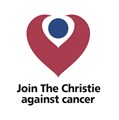Story
Last year, I learnt how to swim in October. Really swim. Properly. So far I have swam over 130,000 meters (thats 5000 pool lengths.) I now swim 4 times a week, cycle 4 times a week and run 4 times a week too, every week, and have been for the last 6 months. Each session I'm increasing the distances and time in the name of training. Typically 10-15 hours a week, that's over 400 hrs in total. My stamina is in training too, as well as my time management. It's a tough schedule, especially while keeping on top of family time and holding down a full-time job. But it's all been geared towards ONE day in July. On Sunday, 17th July I hope to become an 'Ironman'.
An Ironman challenge is one of the hardest one-day endurance races in the world, covering a staggering 140 miles from start to finish. Athletes begin with a 2.4 mile swim. With a quick transition, you jump onto your bike and get pedalling on the 112 mile cycle segment, and then finish the day (hopefully!) by progressing onto 'the run'. The name trivialises it a little, as 'the run' is actually a full marathon – 26.2 miles of running, feet pounding the tarmac, after you've already covered well over 100 miles. An Ironman is not for wusses! Even making it all the way to the finish line is a huge achievement. But be warned: along the way there are several checkpoints which you need to reach within a certain amount of time, otherwise you are disqualified. Your race is finished.
On 17th July 2016 the UK Ironman race starts at 7 am with 2500 competitors in a cold lake near Bolton. You must finish the 2.4 mile swim in a maximum of 2 hours 20 minutes. You are required to have completed both the swim and cycle within 10 hours and 30 minutes, and you have 16 hours and 50 minutes total maximum to cross the finish line. Only if you complete the entire challenge within these time limits can you call yourself an Ironman finisher. Hours of training, physically & mentally, are paramount to success.
Last year, I lost 2 good friends to Cancer and I would really like to thank all the staff and facilities at The Christie Hospital for trying to give them the best chance in fighting this disease. But also being amazing with their care and support when medical science could no longer help. This raised my determination to support cancer researchers to find new treatments for this cruel disease that effects both young and old with no warning and with your generosity we could help them achieve this.
I would really love to raise a significant amount of funds for them. The Ironman is over 140 miles, and if I can raise £100 per mile, that could amount to £14,000 for The Christie! That would be incredible. So please give the most you can give.
Together we can fight it. Thanks for your support.
Bruce Jobling
(Oh and wish me luck! You can follow my training on Strava.com if you want to log on & search for me. )
How did The Ironman start? The now-renowned Ironman originated one night back in 1978. John Collins, a naval officer who was stationed out in Hawaii, began playing around with the idea of combining three of the toughest races that were already held on the island. He came up with the idea for the Ironman Triathlon, and then issued the challenge to the toughest runners, cyclists and swimmers at the time. The competitors, including Collins, took on the three-discipline challenge and it was declared that "whoever finishes first, we shall call him the Ironman." The Ironman challenge is now held all around the world, throughout the year.
So after 400 hours and 10 months of training I must complete in one day:
- 2.5 mile open water swim
- 112 mile road cycle
- 26 mile marathon run
That's 225 km if we are still in the EU !
